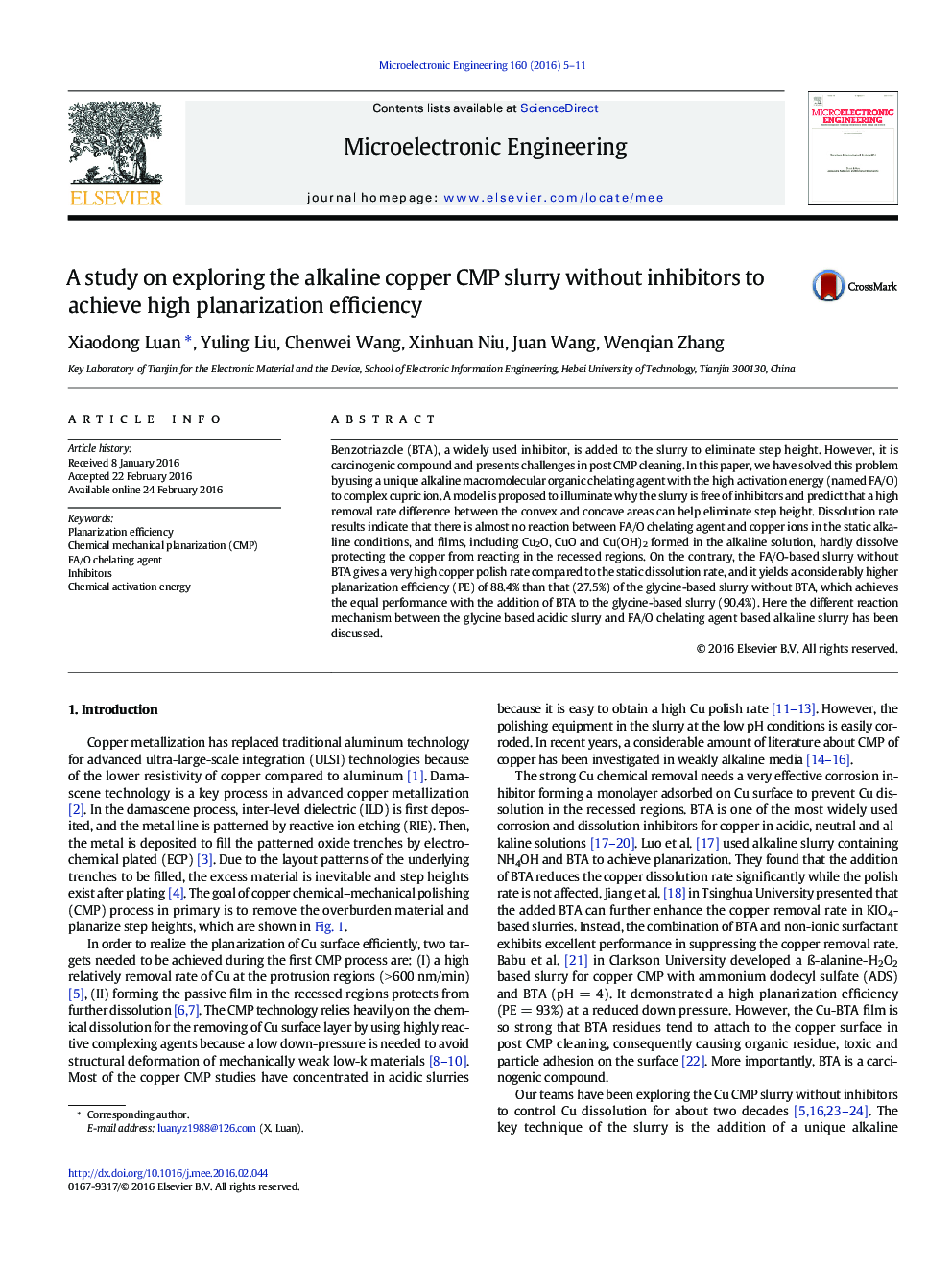| Article ID | Journal | Published Year | Pages | File Type |
|---|---|---|---|---|
| 538921 | Microelectronic Engineering | 2016 | 7 Pages |
•The weakly alkaline copper slurry is free of inhibitors.•FA/O chelating agent has the high activation energy to chelate copper ions.•The activation energy at convex position for the chemical reaction rate is lower than that of concave position during CMP.•The weakly alkaline copper slurry without inhibitors can achieve high planarization efficiency (88.4%).
Benzotriazole (BTA), a widely used inhibitor, is added to the slurry to eliminate step height. However, it is carcinogenic compound and presents challenges in post CMP cleaning. In this paper, we have solved this problem by using a unique alkaline macromolecular organic chelating agent with the high activation energy (named FA/O) to complex cupric ion. A model is proposed to illuminate why the slurry is free of inhibitors and predict that a high removal rate difference between the convex and concave areas can help eliminate step height. Dissolution rate results indicate that there is almost no reaction between FA/O chelating agent and copper ions in the static alkaline conditions, and films, including Cu2O, CuO and Cu(OH)2 formed in the alkaline solution, hardly dissolve protecting the copper from reacting in the recessed regions. On the contrary, the FA/O-based slurry without BTA gives a very high copper polish rate compared to the static dissolution rate, and it yields a considerably higher planarization efficiency (PE) of 88.4% than that (27.5%) of the glycine-based slurry without BTA, which achieves the equal performance with the addition of BTA to the glycine-based slurry (90.4%). Here the different reaction mechanism between the glycine based acidic slurry and FA/O chelating agent based alkaline slurry has been discussed.
Graphical abstractFigure optionsDownload full-size imageDownload as PowerPoint slide
